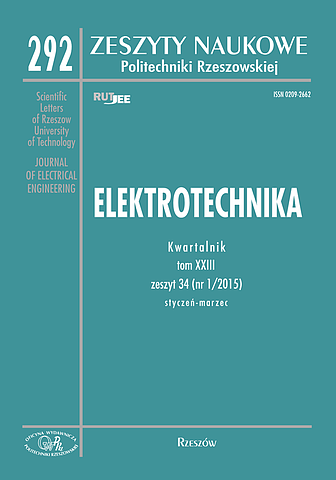Abstract
The article presents the project of street lighting with the example of a section of road. Lighting was created for the road with length of 1 kilometer located in a rural area. Three versions of the lighting are considered: the first – with metal-halide lamps, the second – with high-pressure sodium lamps, the third – with LED lamps. In case of the LED lamps, the control system MINOS was introduced. For calculation of lighting the software DIALux and Excel were used. Compliance DIALux calculation algorithm with requirements of the lighting norm PN-EN 12 301: 2007 results of the calculations can be used in practice. The object of the project was to choose the best of the proposed variants of street lighting due to consumption of electricity and costs. Estimating the energy consumption considered the time of the installation, the number of lamps and their power. In contrast, conducting financial analysis considered: investment costs of the lighting installation, energy costs and operating costs. After making calculations in Excel it has been found that the installation of street lighting in case of the LED lamps is the most advantageous in terms of energy and economic. In case of the LED lamps, the control system MINOS was introduced by which energy consumption is reduced by the lighting installation. It is worth to mention that the example of the section which uses the control system is financially unprofitable. The investment is a longterm investment and will give profits after 50 years. The results of analyzes mainly depend on the type of road, lighting situation and lamps used.
References
[2] PKN-CEN/TR 13201-1: 2007 Oświetlenie dróg. Część 1 – Wybór klas oświetlenia, ICS 93.080.40
[3] PN-EN 13201-2: 2007 Oświetlenie dróg. Część 2 – Wymagania oświetleniowe, ICS 93.080.40
[4] PN-EN 13201-3: 2007 Oświetlenie dróg. Część 3 – Obliczenia oświetleniowe, ICS 93.080.40
[5] PN-EN 13201-4: 2007 Oświetlenie dróg. Część 4 – Metody pomiarów parametrów oświetleniowych, ICS 93.080.40
[6] Rydz P.: Projektowanie oświetlenia ulicznego – praca dyplomowa inżynierska, Politechnika Rzeszowska, Rzeszów 2015
[7] Wiśniewski A.: „Elektryczne źródła światła”, Oficyna Wydawnicza Politechniki Warszawskiej, Warszawa 2010
[8] Żagan W.: „Podstawy techniki świetlnej”, Oficyna Wydawnicza Politechniki Warszawskiej, Warszawa 2005





